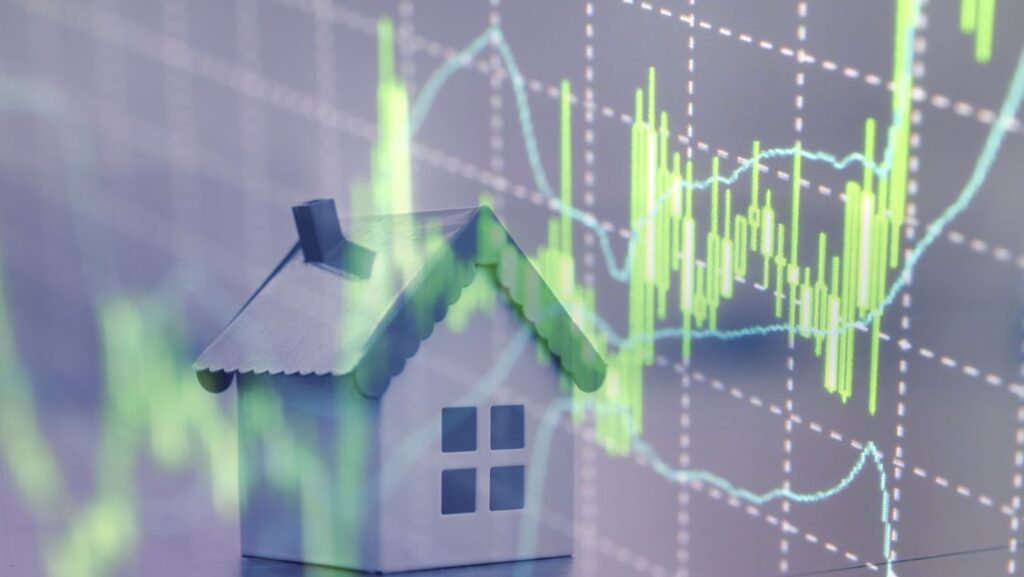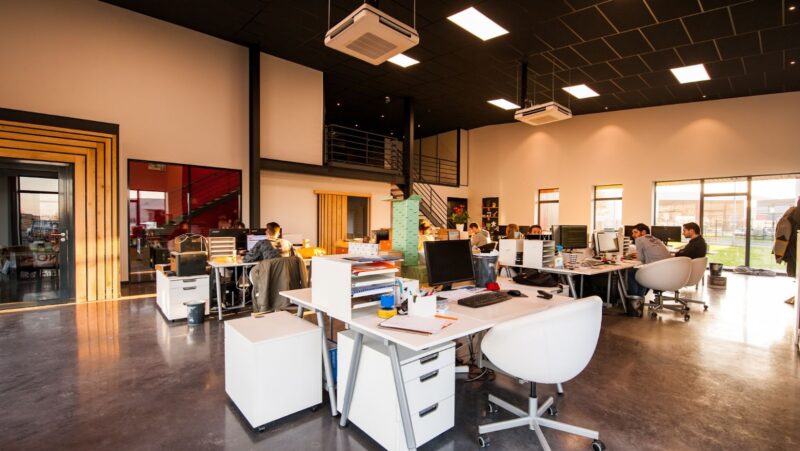
Real estate investing is transforming radically, with home flipping becoming an increasingly popular option. Now, virtual reality is taking things a step further and allowing realtors to take advantage of the latest technology to house flip from the comfort of their home.
This article looks into the benefits of home flipping in virtual reality and some of the challenges and pitfalls investors must consider before jumping in.
Home Flipping Becomes Virtual Reality
Home flipping is a real estate investment technique that involves buying a home, renovating and upgrading it, and then selling it for a profit. It can be a lucrative venture when done correctly; however, there are risks and challenges associated with the process that must be taken into consideration to maximise returns.
Home flipping usually involves purchasing an older home needing repairs or renovations. Upgrading such a home will usually mean improving the electrical, plumbing and heating systems; replacing appliances; possibly expanding the size of existing rooms or adding new ones altogether; updating interior design elements like paint and décor; increasing curb appeal with landscaping improvements; etc., all of which may increase the overall value of the property.
To recoup investments quickly and efficiently, properties are typically sold within one to two years of the purchase date – with profits typically ranging from five to 10 percent of the original purchase price. In recent years, savvy real estate investors have turned to virtual reality (VR) technologies to assist in finding properties and conducting virtual tours during open houses. By using VR programs such as augmented reality walk-throughs or photorealistic 3D renderings, potential buyers can better understand how their planned remodel project will look once completed without ever having stepped foot on the property itself – saving time, resources, money and energy along the way.
How is virtual reality changing the home flipping game?
Virtual reality (VR) transforms how we view and interact with the world around us – including how we invest in property. For example, home flipping is an increasingly popular strategy in real estate. Incorporating new technologies such as virtual reality can help smart investors maximize their profits and minimise costly mistakes when looking for properties to buy.
VR offers a unique way to view and customise homes that has the potential to revolutionise home flipping investments for the better. By adding VR technology into the mix, investors can visit any home from anywhere in the world – potentially shaving time and costs from traditional travel expenses associated with inspecting properties up for purchase. In addition, virtual reality allows buyers to easily visualise possible design renderings that can be used to quickly and affordably update or refresh an outdated or worn-out space.
VR offers a range of options that can bring life-like customizations into your living room––including 3D models you can craft yourself or those created by professional developers specialising in real estate investments. This technology allows buyers to explore any property without leaving their home, shopping around quickly while making better informed decisions while reducing risk associated with investing in property remotely. In addition, these matrices of data collected like weather patterns & crime rate – are invaluable resources which allow potential buyers to make smart decisions every step of the way!
Benefits of Home Flipping in Virtual Reality
Home flipping has become the new trend, and now with virtual reality, it has become even easier for people to enter this real estate market.
With virtual reality, you no longer need to physically be there to see what a home looks like or to make renovations. Instead, virtual reality allows for a more comprehensive and real-time experience, saving time and money.
Let’s look at some benefits of home flipping in virtual reality.
Get an accurate picture of the property
Home flipping in virtual reality allows buyers and sellers to get an accurate picture of a property before visiting or signing a contract. By letting buyers walk through the property and find details that may remain hidden from photographs, virtual reality can be a game changer when it comes to home flipping.
Traditionally, buyers would visit open houses or drive by potential flips to evaluate the property before signing any contracts. However, with home flipping in virtual reality, they can take a virtual tour and take their time exploring details of the space without even stepping foot on the property. Through this immersive experience, sellers can easily showcase details such as views of nearby neighbourhoods or layouts that otherwise may not have been pictured online. This allows for more detailed viewing and assessment for all interested parties due to the accurate details captured with advanced technology in virtual reality.
By virtually visiting the property, both buyer and seller gain more assurance that they are making the right purchase decision because both sides get an exact picture — right down to the millimetres — of specific features of each room, enabling them to make more informed decisions regarding improvements they may want undertake or features they plan on keeping intact within their real estate investments. Home flipping in virtual reality helps everyone feel more secure while getting more out of their investments in this increasingly competitive market.
Easier to identify design elements
Home flipping in virtual reality is becoming increasingly popular due to its ease and convenience. With the help of 3D-rendered models,users can simulate an actual home with incredibly detailed images and intricate designs that allow for easier identification of elements like roofs, stairs and railings.
This element of realism makes it easier to visualise how a renovation might look in person before investing any time or effort into fixing up a property. Furthermore, home flippers in virtual reality can also have detailed floor plans available so they can go room by room plotting out where furniture will be placed or wall treatments that would best enhance the rooms. Finally, playing around with different design elements makes it easier to envision what the end product will look like which helps save time and trouble when tackling big projects.
Ability to virtually furnish and customise
Home flipping in virtual reality provides an exciting opportunity for house flippers to design and furnish a home without ever stepping into a home improvement store. Virtual reality allows users to search through thousands of textures and colors, as well as 3D models of furniture and decor to create their unique look. House flippers can also access built-in tutorials to learn how to design the right space for each budget. Plus, with virtual reality, no matter how much furniture buyers have, they can customise their room in minutes.
In addition to virtually furnishing their homes, house flippers can create realistic three-dimensional models of their flips, making it easier for viewers to interpolate furniture layout and imagine themselves living in the home. This feature simplifies processes like measuring dimensions or creating real estate floor plans from scratch that physical property visits normally entail. Plus, this technology allows users to get instant previews without requiring them to enter the flip location.

House flipping in VR gives individuals access to powerful tools that save time and money when renovating homes – something worth considering when trying to profit on your next flip!
Challenges of Home Flipping in Virtual Reality
Home flipping in virtual reality is an exciting new venture for many investors, but some challenges must be considered.
There are several key differences between physical and virtual real estate investing, such as the need to create an immersive 3D environment for potential buyers to move through, the time and cost of creating and updating custom 3D models and designs, and the requirement to factor in regulations and laws regarding virtual real estate investments.
Let’s dive into some key challenges of home flipping in virtual reality.
Cost of virtual reality equipment
Home flipping in virtual reality is gaining more traction in the real estate as more companies and individuals embrace the technology. This type of technology operates differently from traditional real estate transactions, which can be expensive for some people. The cost of virtual reality equipment (such as headsets, controllers, and sensors) vary considerably depending on what kind and quality you choose. Some products may cost up to $50,000 or more, while others may only require you to spend just a few hundred dollars or less.
In addition to purchasing the equipment, several other costs come with using virtual reality technology such as training and setup fees. As a home flipper, you will need to pay subcontractors who specialize in this field so that they can help set up, tune up and provide guidance concerning the virtual experience. You will also have to factor in software costs, including maintenance and renewal fees, if you use a subscription-based platform or services. Additionally, power consumption expenses are often overlooked when dealing with VR hardware since it tends to be energy-intensive since sensors, processors and graphics cards tend to draw power due to the user’s physical movements in the virtual world.
Learning curve for creating a virtual reality tour
Creating a virtual reality tour of a property in preparation for a flip can be daunting for home flippers unfamiliar with the complexities of virtual reality. While many software solutions are available to help generate virtual reality tours, there is still a learning curve involved in understanding the technology and how it works in the context of home flipping.
Such tasks include learning how to use virtual camera placement and knowledge of how to adequately capture different aspects of the property, as well as using photogrammetry and mesh data to create accurate models. Additionally, there is a need for technical model editing, scripting coding and optimization skills.
Knowing how to use 3D modelling technology according to industry standards can be useful when building 3D models that accurately reflect the property in question and can be shared digitally. Home flippers may also discover an increased need for post-processing skills such as computational renderings, compositing shots into cinematic sequences and object tracking with motion capture technology. Lastly, understanding investment criteria such as ROI (Return On Investment) calculation is also important when considering potential home flips in virtual reality environments.
Need for specialised virtual reality professionals
The demand for specialised professionals with expertise in virtual reality is increasing as more home flippers are opting to utilise the potential of immersive technology to explore properties and flip houses. Flipping a house can be challenging but virtual reality makes it easier by allowing a user to experience the property within the confines of a 360-degree immersive environment.
While this is an exciting development, it also means that there is a need for skilled professionals that understand how to incorporate virtual reality into the home flipping process. In addition, home flippers must employ personnel who know how to use existing technologies effectively within their project’s needs.
There are various skills required from such individuals when it comes to leveraging new technologies like virtual reality while flipping houses. Specially trained professionals need to ascertain whether or not this technology can provide an advantage in their particular endeavour and begin looking into ways to incorporate immersive environments within their project models. Added onto this is the fact that they also need to understand how best to utilise these toolsets into marketing initiatives and training efforts, both of which require a certain degree of technical knowhow to execute properly.
Tips for Home Flipping in Virtual Reality
Home flipping in virtual reality is becoming increasingly popular, with technology advancements allowing for more realistic experiences. It presents a unique opportunity for home flippers to make money and gain crucial investment experience.

The process for flipping a home in virtual reality is different from a traditional real estate deal, and there are certain things home flippers must take into account when engaging in this activity. This article will discuss the tips and strategies you need to know before home flipping in virtual reality.
Invest in quality virtual reality equipment
Investing in quality equipment is an important step when flipping homes or remodelling for a virtual reality experience. Many of the features that make virtual reality unique require specialised equipment ranging from tactile feedback devices to 3D glasses. In addition, investing in VR hardware allows you to take full advantage of technology like motion controllers, essential for creating a true immersive experience for your customers.
Furthermore, choosing high-quality hardware with lower latency and head-tracking capabilities will ensure a smoother and more enjoyable experience when flipping homes in virtual reality. Additionally, purchase compatible accessories such as headphones and microphones to capture sound effects and narration during home renovations.
Finally, having reliable internet and computer power is essential to minimise potential lag issues while users explore virtual space. Home flipping can flourish as a viable business with proper equipment investments, even within augmented or virtual realms.
Create a realistic virtual reality tour
Creating a realistic virtual reality tour is a great way to make your home flipping project stand out. A virtual tour can assist potential buyers in getting an initial feel of what the property will look like once renovations are complete. By using VR you can give your buyers a rapid and immersive experience of the finished property, allowing them to visualise living in it immediately.
When creating virtual reality tours for home flipping projects, it’s essential to ensure that everything looks as realistic as possible. Be sure to include the details you would normally add from any other normal walkthrough such as windows, doors, lighting, furniture and decor pieces, etc. This allows potential buyers to feel as if they are actually inside the home and gives them an accurate representation of the future property they could be purchasing. Additionally, adding engaging visuals such as animations or sound effects can help grab attention and make viewers more interested in viewing your project.
Finally, you should also consider providing basic information about each room so that people who view your virtual tour can better understand how much space is available and how it functions within their lifestyle habits. By providing these details upfront and being transparent with potential investment buyers, you will ensure everyone involved is on the same page when taking on a virtual home flipping project.
Hire experienced virtual reality professionals
Home flipping can be a lucrative investment, especially in virtual reality. However, it takes a great deal of hard work and dedication to make the most out of any home flip in virtual reality, and hiring experienced professionals is one of the keys to success. With help from experienced virtual reality professionals, you can access more resources, receive more valuable guidance, and get the best results possible.
It’s essential that anyone considering investing in home flipping explore their options for professional help and make sure they get adequate advice on how to manage their investments. In addition, anyone looking to hire an experienced professional team should look into the background of each person they are considering and check references. Finally, it’s important to understand exactly what services each professional offers before hiring.
Before signing on with any professional team for your home flip venture in virtual reality, inquire about their experience level with this field. Ensure there is enough understanding regarding all aspects of home flipping – from evaluating existing property damage assessments to understanding the applicable laws or regulations involved in virtual real estate transactions. In addition, ask about past challenges they have faced concerning similar projects, how successful those projects were for both parties involved, and their strategies for dealing with challenges that may arise during your project.
Having an experienced team at your side during a home flip goes beyond merely having someone available who can talk tech – it’s also essential that they understand how best to connect your objectives with the necessary tools and resources available today that can help you reach them within budget constraints while achieving top-notch results. Be sure any company you select has experience working on similar projects within virtual reality so that no skills gaps exist between them and what successful execution requires for completing a profitable home flip project involving this technology-driven domain.












